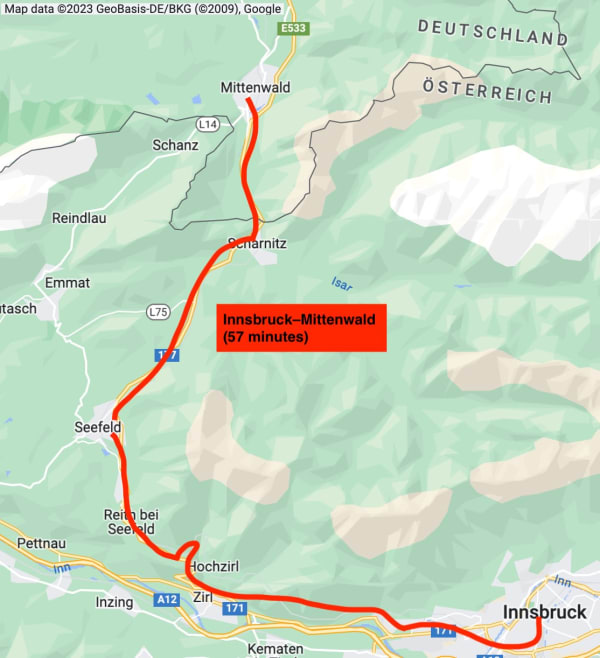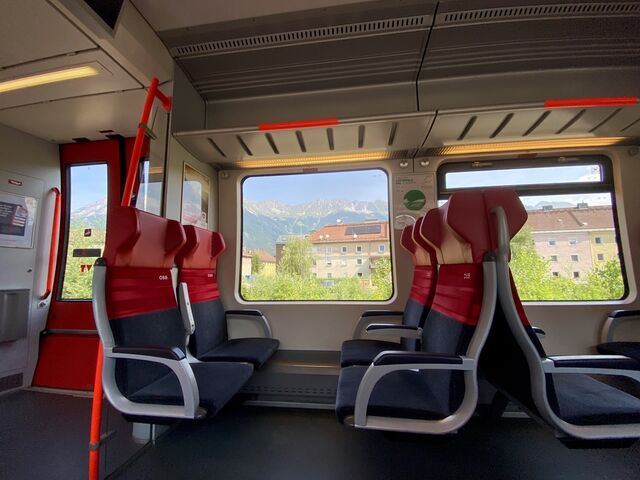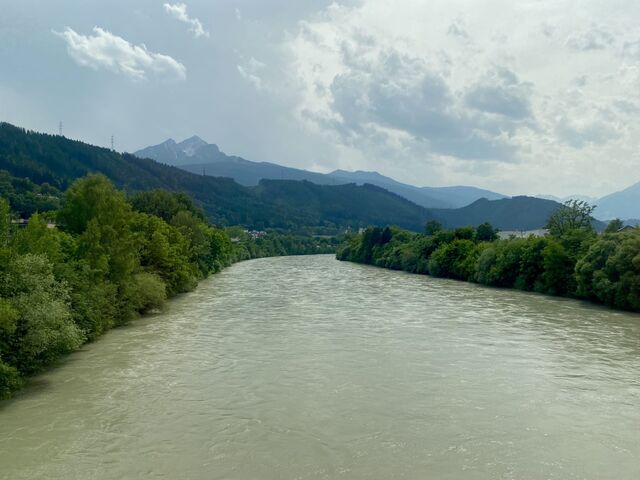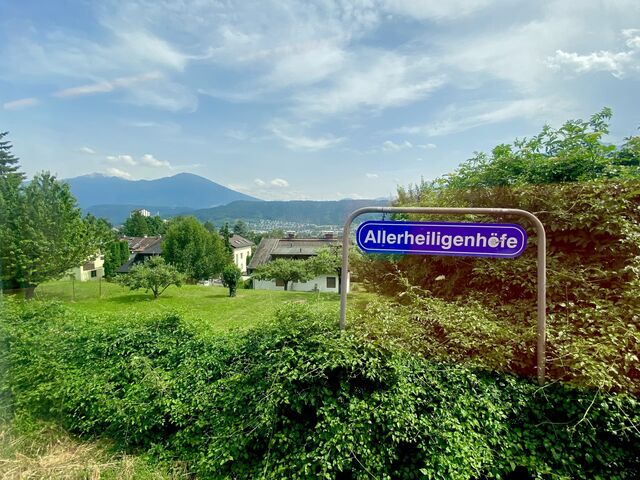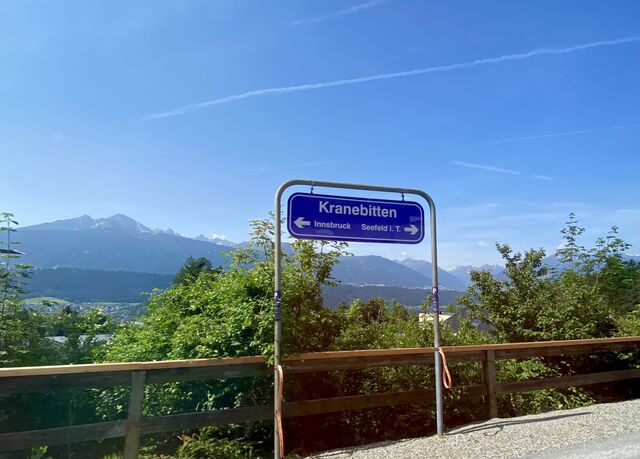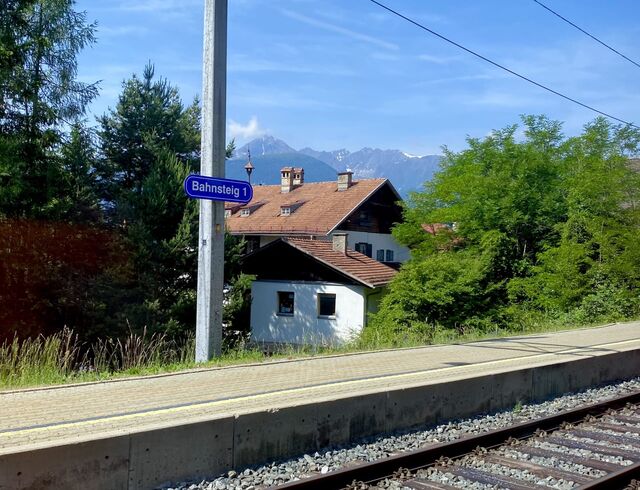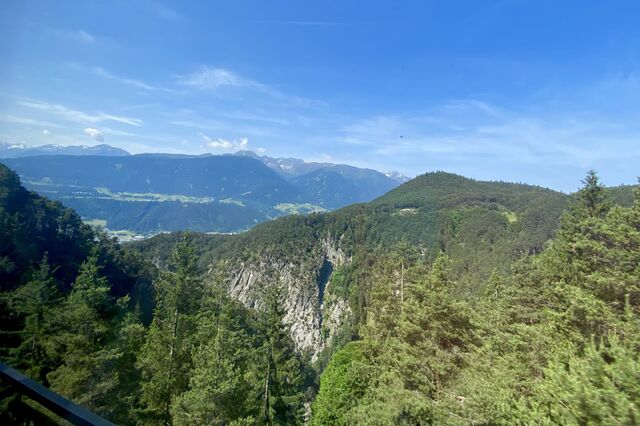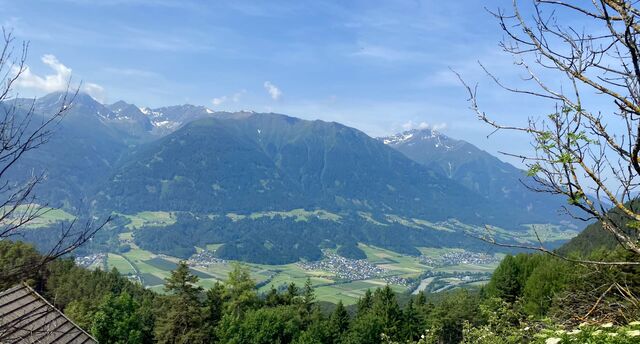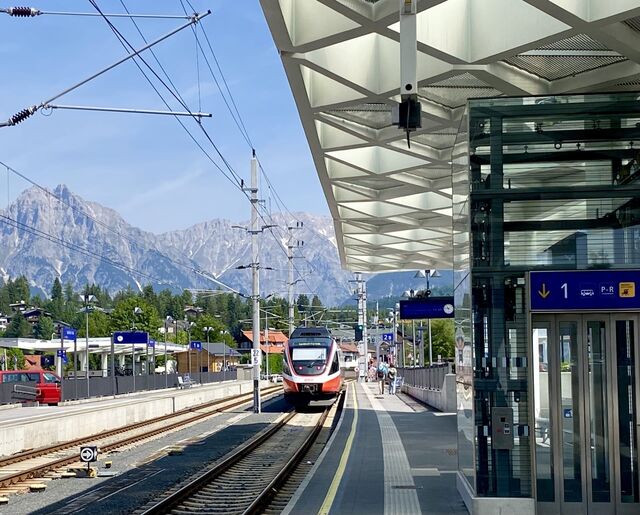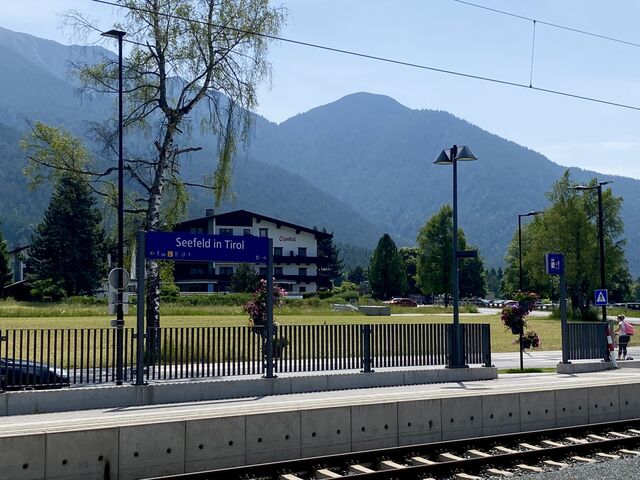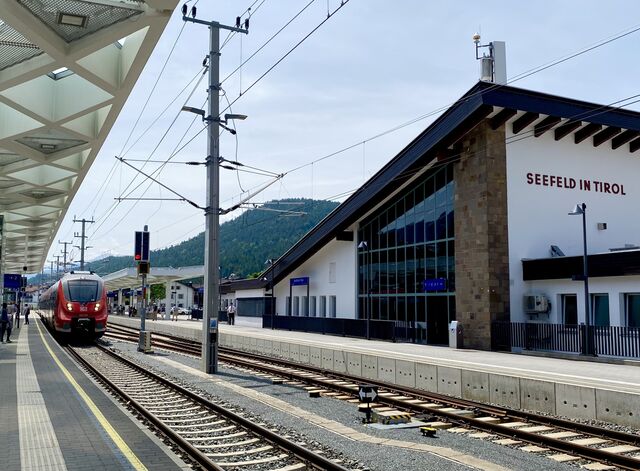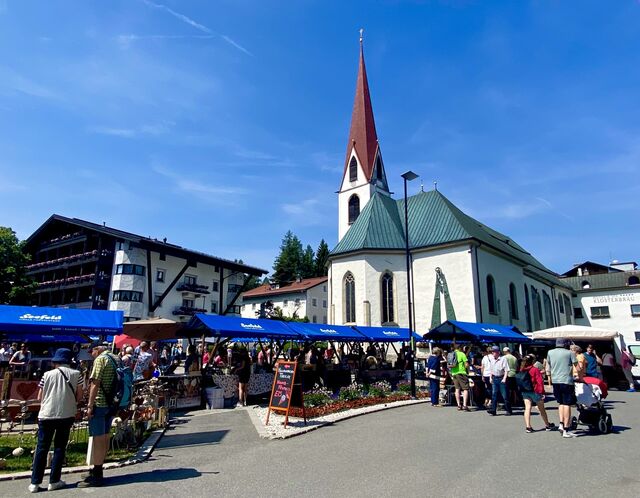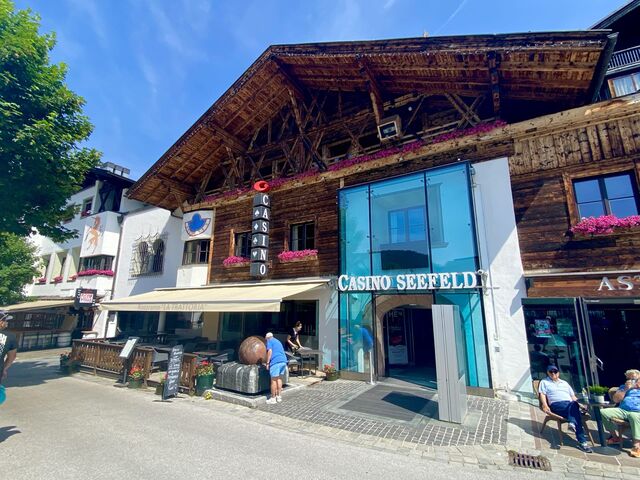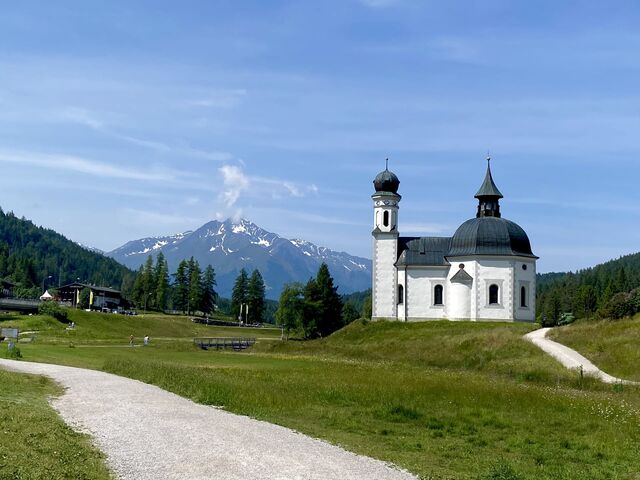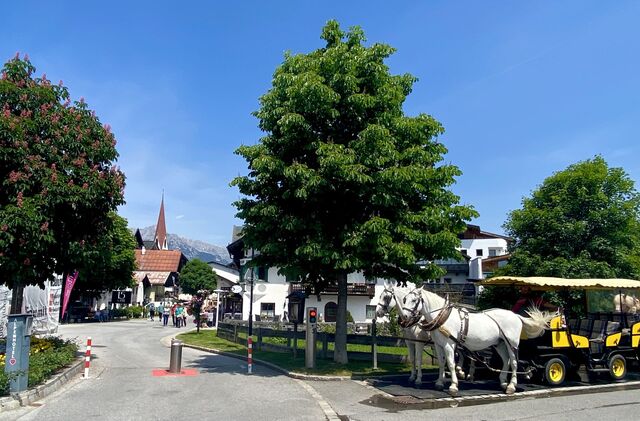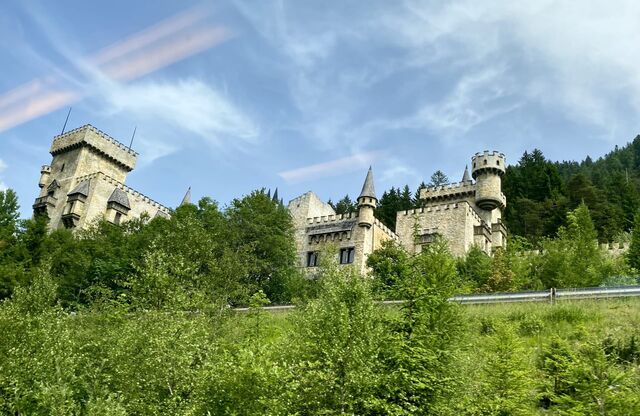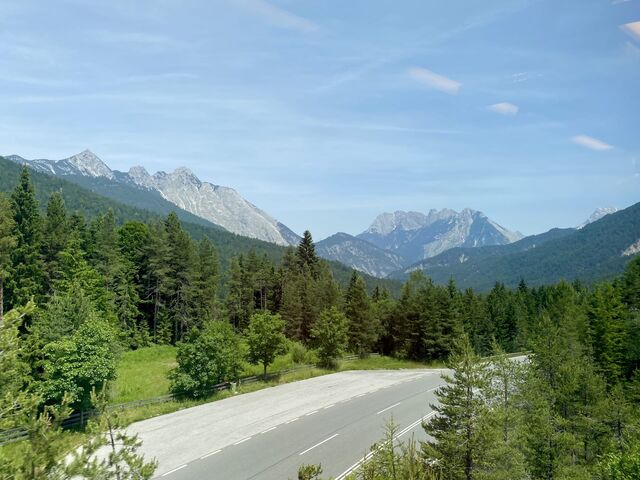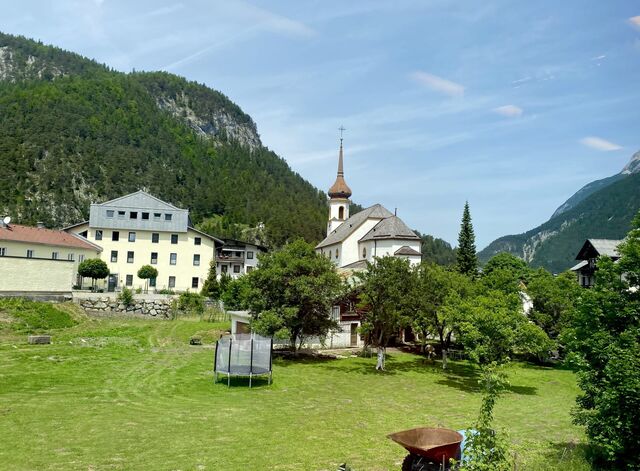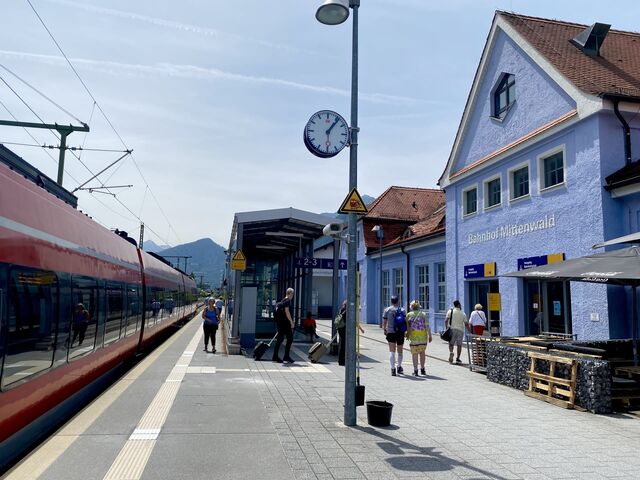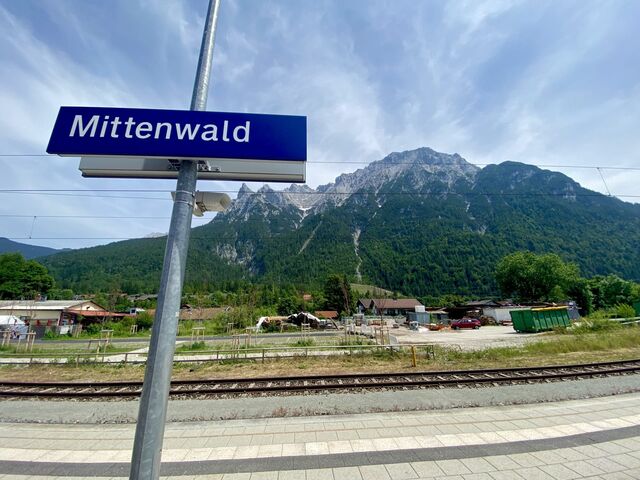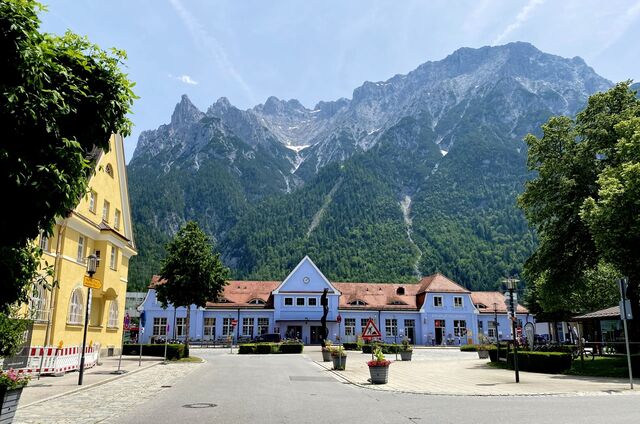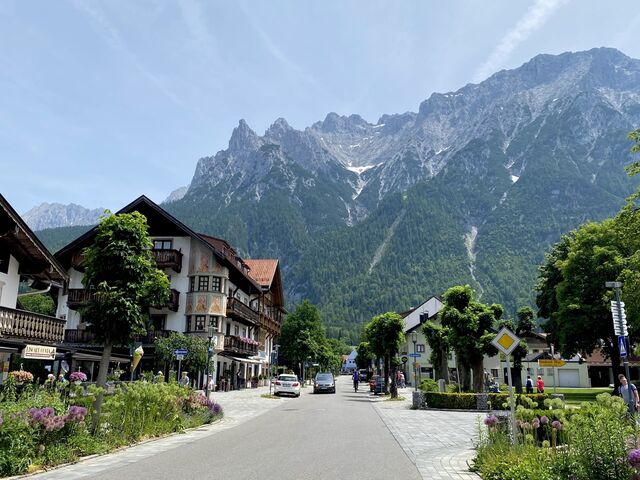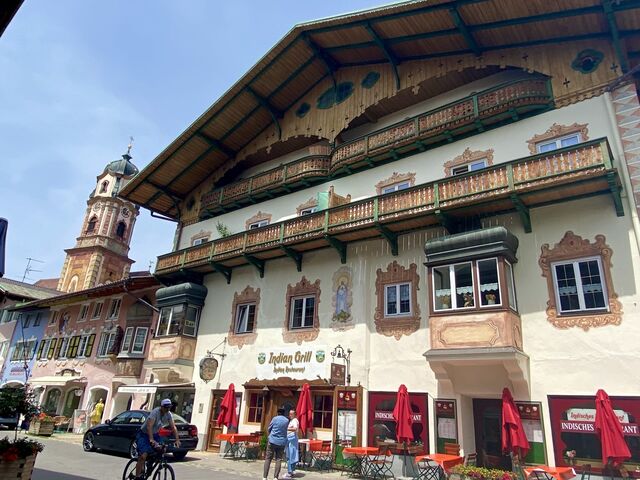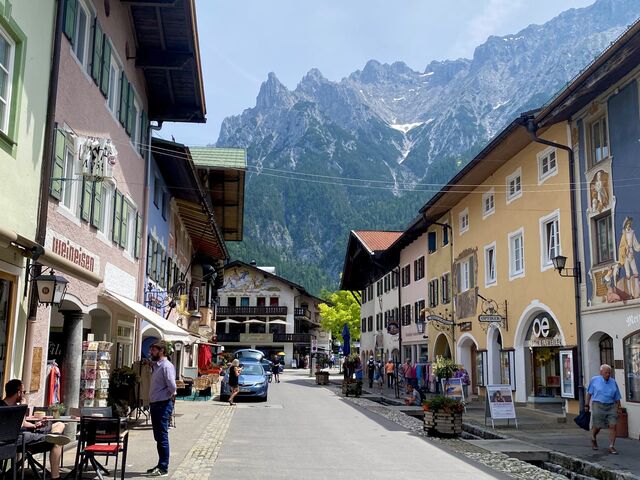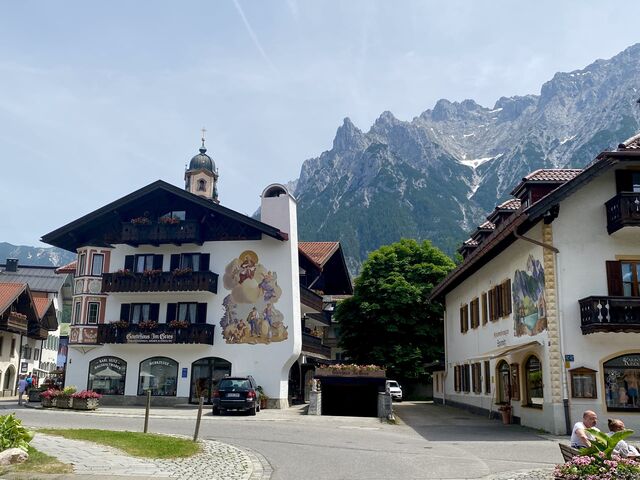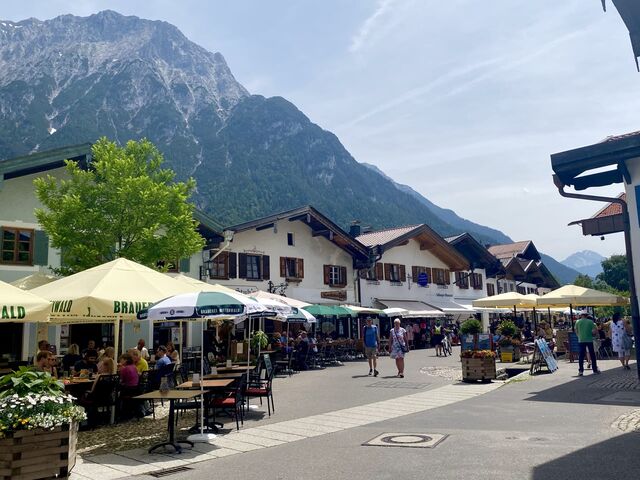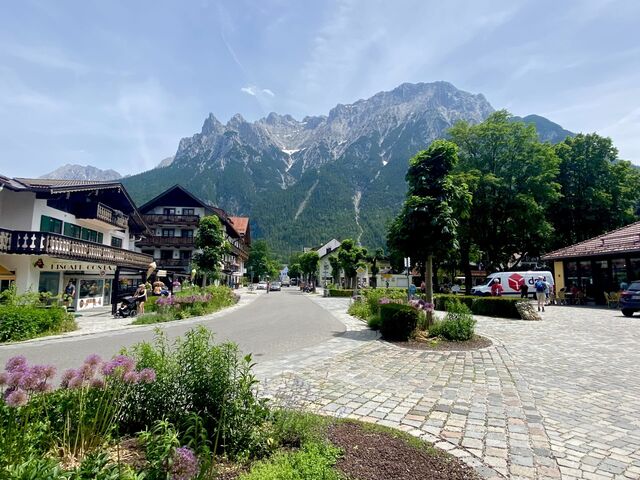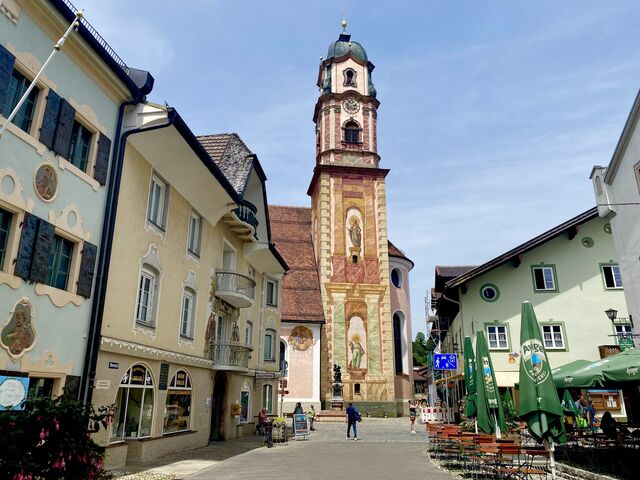Mittenwald Railway
On my second day in Innsbruck, Austria, I decided to take a short trip on the Mittenwald Railway across the border to Bavaria, Germany.
Opened in 1912, the Mittenwald Railway (also known as the Karwendel Railway), is a 32 kilometre railway line connecting Innsbruck to Mittenwald. The train travels through 16 tunnels and over 18 viaducts. The most impressive of these is the arched, iron-girder Schlossbach Bridge which carries the Mittenwald Railway over the Schlossbach stream.1 I was very impressed by the clean and spacious 2nd class carriages with their red and dark grey seat design.
Seefeld, Austria
My trip to Mittenwald was slightly derailed when the train pulled into Seefeld, a small village on the Austrian side of the border. I read the information screen on the train and for some reason, thinking I could read German, decided it was telling me that I had to alight in Seefeld and catch a replacement bus across the Austria-Germany border to Mittenwald. It turns out it said nothing of the sort and the train continued normally to Mittenwald. Nevertheless, I had already alighted and Seefeld was a very pleasant surprise. It was a hive of activity, brimming with tourists and market stalls. I ended up staying here a couple of hours before continuing my journey north to Germany.
Seefeld is located on a plateau between the Wetterstein and Karwendel Mountains. The Seefeld Plateau gained historical significance with the construction of the Roman military road—Via Romea—which linked Northern Germany via Austrian Tyrol to Rome. Seefeld became a pilgrimage site from the 14th Century, with its economic growth closely tied to religious tourism on the Via Romea.2
After an enjoyable few hours in Seefeld, I boarded a train to Mittenwald, Germany! As I had a flexible ticket which allowed me to catch any train between Innsbruck and Mittenwald on the day of my travel (the ticket cost approximately €10 each way), my unexpected stop in Seefeld and sudden need to catch a different train to Mittenwald did not pose a problem.
Shortly after departing Seefeld, there were great views of Schlossberg Castle from the train. The ruined toll castle stands on a hill north of Seefeld and was constructed sometime prior to 1248. Apparently most of the castle was demolished in 1911—1912 and used for the construction of the Mittenwald Railway.
Mittenwald, Germany
Mittenwald is the first railway station north of the Austria-Germany border on the Mittenwald Railway. It is situated in the valley of the River Isar, by the foothills of the Alps. Mittenwald is famous for the manufacture of violins, violas, and cellos which began in the 17th Century. Aegidius Klotz—the grandson of Matthias Klotz I who founded the famous Mittenwald school of violin making—is believed to have crafted the personal violin of Mozart.3
I was absolutely blown away by Mittenwald Station with its stunning mountain backdrop. It has to be one of the world’s most beautifully situated train stations. I expect it would be even more picturesque in the winter when the surrounding mountains are covered in snow.
The most significant landmark in the village is the Roman Catholic church of St. Peter and Paul which was constructed between 1734 and 1749 (bottom right image below). The church and many other buildings in Mittenwald are decorated with elaborate paintings known as Lüftlmalerei. This form of mural art is native to villages in southern Germany and Austrian Tyrol, and was once described by German poet Johann Wolfgang von Goethe as a “living picture book”.4 The colourful murals, which decorate the sides of homes, businesses, and cathedrals, feature scenes from the Bible, alongside depictions of ordinary rural life.5
After an enjoyable few hours in Germany, I boarded the Mittenwald Railway once again for the return journey to Innsbruck.
Seefeld Tourism Association, ‘Karwendelbahn Railway (Mittenwaldbahn Railway)’ (online, 2024). ↩︎
Seefeld Tourism Association, ‘The History of Seefeld’ (online, 2024). ↩︎
Violin World, ‘Aegidius Sebastian Klotz 1774’ (online, 2023). ↩︎
DerWesten, ‘Lüftl Painting – Old Motifs as 3D Images on House Walls’ (online, 2017). ↩︎
Lüftlmalerei, ‘History of Lüftlmalerei in Garmisch-Partenkirchen’ (online, 2024). ↩︎
